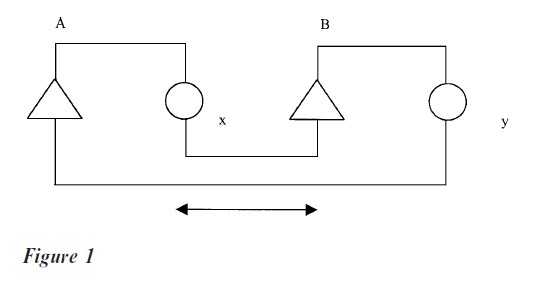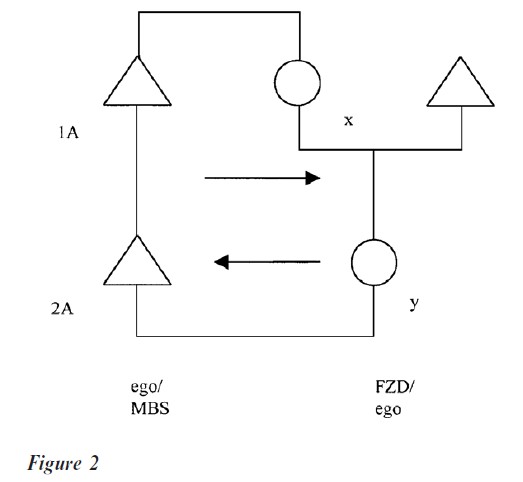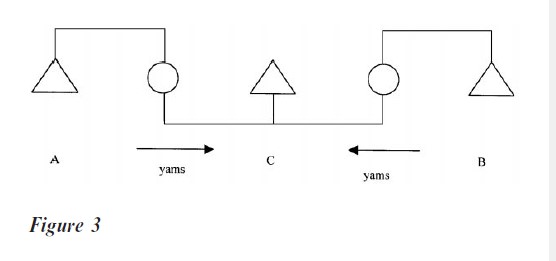Sample Exchange In Anthropology Research Paper. Browse other research paper examples and check the list of research paper topics for more inspiration. If you need a research paper written according to all the academic standards, you can always turn to our experienced writers for help. This is how your paper can get an A! Feel free to contact our custom research paper writing service for professional assistance. We offer high-quality assignments for reasonable rates.
The terms ‘gift’ or ‘reciprocal exchange’ are used to describe the forms of exchange that anthropologists traditionally have described and analysed. These forms of exchange coexist with market exchanges such as barter, buying and selling, and money lending. Exchanges of the latter type have been the traditional concern of economists but anthropologists have also produced detailed ethnographic descriptions of markets, especially the periodic market systems found in rural areas around the world. There has been much debate in the anthropological literature about the defining characteristics of gift exchange systems, how they are distinguished from commodity exchanges, and of the manner in which they articulate with the market exchanges both locally and globally.
Academic Writing, Editing, Proofreading, And Problem Solving Services
Get 10% OFF with 24START discount code
This research paper focuses on nonmarket exchanges and consists of four parts: the first examines exchange as a general concept and defines some key terms; the second looks briefly at the history of anthropological theories on the subject; the third presents some illustrative examples; and the fourth examines some attempts to understand the historical transformation of gift exchange systems in the context of globalization.
1. The Concept Of Exchange
An exchange can be defined as a transaction that is reciprocated. A transaction is the process whereby one transactor transfers an object to another transactor. This can be represented formally, as

where A is the giver, B the receiver, and x the object transferred.
Reciprocation is the process whereby the initial transaction is reversed such that the receiver becomes the giver. This can be represented formally as

where A is now the receiver, B the giver, and y the object reciprocated. The reciprocation can be simultaneous in time or delayed. When it is simultaneous it takes the classic form of an exchange

where A gives B the object x in exchange for the object y. When the reciprocation is delayed in time it is called a delayed exchange. Exchanges, whether simultaneous or delayed, define three distinct relations—value, property, and social—the significance and meaning of which will vary depending on the social context.
Value relations refer to those that hold between the objects and can be expressed formally as x:y. These relations may be quantitative or qualitative and involve either the same object or a different object. If the qualitative dimension is held to be more significant, as it is in many culturally specific contexts, the size, shape, color, age, and history of an object is more important than the number given. Most gift exchanges involve valuations of this kind. They are analogous to that between playing cards where we find, for example, that a ten of clubs has a higher qualitative rank than a five of clubs rather than being twice its quantitative size.
Property relations refer to those relations that hold between the object and the person giving it; they can be expressed formally as A:x and B:y. Market exchanges involve private property rights that give the possessor the legal right to alienate the object in question. The exchanges that anthropologists study often involve different forms of nonprivate property rights of a personal, inalienable kind. Objects of this kind can be detached and given away but the sentimental bond between the giver and the object is often deemed not to be broken. An example here is the exchange of hair that young children sometimes make to affirm a friendship.
Social relations refer to those that hold between the transactors to an exchange. The transactors can be kin, friends, or strangers. The purpose of an exchange may be to reproduce existing relations, to break them, or to create new relations; in other cases the purpose of an exchange may be to obtain an object of utility rather than to create social relations.
Anthropological studies of exchange have tended to concentrate on those exchanges that involve qualitative value relations rather than quantitative ones, on those concerned with inalienable property relations rather than private property, and on those concerned with the establishment of social relations rather than the quest for an object of utility. This is the theoretical domain that the theory of reciprocity and the gift has tried to illuminate.
2. Anthropological Theories Of Exchange
Anthropological theories of exchange arose out of the attempt to present a synthetic account of the pioneer ethnographic research of scholars such as Boas (1897) and Malinowski (1922) at the turn of the twentieth century. These theories, in turn, were modified and developed by subsequent ethnographic research in different historical and political contexts.
Boas (1897) described the spectacular potlatch of the Kwakiutl people of northwest America. This is a system of competitive gift giving among chiefs where one chief struggles to outdo a rival by out-giving him. The competition sometimes ended with chiefs destroying large amounts of property.
Malinowski (1922) described the equally spectacular kula system of the people of the Milne Bay area of Papua New Guinea. Here, people went on overseas expeditions to exchange high ranking armshells for necklaces.
The incremental giving in the potlatch system bore formal resemblance to market transactions involving interest and Boas himself used this term to describe it. The kula, for its part, had formal similarities with barter exchange. Malinowski, though, was of the opinion that conventional economic theory had no role to play here for this was something radically different to commodity exchange.
This theme was developed in Mauss’s (1925) classic essay The Gift, one of the first syntheses of the comparative literature. His greatest contribution was to pose a new question that focussed on social relations between transactors rather than value relations between objects. Whereas the economists posed the question of price determination, Mauss posed the question of transactor obligation. He argued that we should not enquire into the determinants of the exchange rate of armshells for necklaces in a kula, but into the question of the obligations transactors are under to give, receive, and repay gifts.
This question led anthropologists to seek the answer not in the sphere of production or consumption, as the economists were wont to do, but in the sphere of reproduction and political authority, i.e., in the sphere of kinship and chieftainship.
Polanyi (1944), for example, emphasized the key role of reciprocity and redistribution and argued that the former had its basis in the ‘give and take’ of kinship relations and the latter in centralized political relations where the chief pooled gifts given to him and redistributed them in grand rituals. Polanyi’s principal concern, however, was the ‘great transformation’ that led to a self-regulating market economy.
Levi-Strauss’s (1969) theory of kinship, which was developed around the same time as Polanyi’s theory, is an attempt to answer Mauss’ question about the obligation to give, receive, and repay. He argued that a woman given in marriage was the ‘supreme gift’ and that the incest taboo, whose universality he saw as deriving partly from nature, was the supreme rule of the gift. His argument has been challenged by feminist anthropologists who have shown that marriage systems are patriarchal, cultural constructions with no basis in nature.
Levi-Strauss distinguished three forms of gift exchange—restricted, delayed, and generalized—and showed how they are the result of three different types of marriage—respectively, bilateral cross-cousin marriage, patrilateral cross-cousin marriage, and matrilateral cross-cousin marriage. Restricted exchange has the general form of simultaneous exchange, delayed exchange is where the reciprocated transaction occurs a generation later, and generalized exchange is a chain of one-way transactions that may feed back on itself to form a circle.
Sahlins (1972) developed this idea by showing how exchanges involving objects, and the form of reciprocity underlying them, are related to kinship distance; he also showed that political rank could transform the principles of reciprocity into a system of redistribution whereby gifts are channeled upwards to a chief who subsequently redistributes them to maintain his status.
Gregory (1982) has attempted to synthesize this anthropological tradition of thought with that of the political economists (Smith, Ricardo, Marx, and Sraffa) on commodities in order to develop a conceptual framework for understanding the particular situation in Papua New Guinea where gift exchange has effloresced under the impact of colonization and globalization.
Interest in the theory of the gift has continued to flourish in the last quarter of the twentieth century but it has taken new directions. Godbout and Caille (1998) return the debate to one of Mauss’ original concerns, the political implications of the gift for French capitalism and European society more generally. Anthropological theory, especially the work of Weiner (1992) and Godelier (1999), has begun to problematize those things that are kept but not given, i.e., things that are neither gifts nor commodities. Examples here include family heirlooms and the crown jewels. The theoretical and ethnographic study of these objects raises questions about lineages, inheritance, religion, and cultural identity.
3. Some Illustrative Examples
The theory of reciprocity and redistribution, and the particular theories of value, property, and social relations informing it, are best illustrated by means of some examples that illustrate the problems of taking a market-centric approach to gift exchange.
Restricted exchange is a type of reciprocity based on ‘sister exchange.’ Figure 1 illustrates this. Here, the transactors are two men, A and B, who exchange their sisters x and y. Exchanges of this type are formally equivalent to barter but, from a social point of view, radically different. This is because the property relation between brother and sister cannot be reduced to a private property relation. The women are, from a male point of view, equivalent in some sense but the value relation cannot be reduced to that of price. Finally, an alliance is created here between two exchanging groups. Repeated exchanges of this type between the male descendants of these men create cross-cousin marriage systems, which are still of great importance in south India and many other parts of the world. In some of these places, such as the Sepik area of Papua New Guinea, the two exchanging groups are exogamous marriage moieties who maintain their alliances by seasonal exchanges of yams. The ideology is that these yams must be balanced, such that if a 2-meter long yam is received a yam of the same length must be returned. According to some theorists, yams serve as the symbolic substitutes for the women. This is called ‘balanced reciprocity’ and it associated with marriage of the sister-exchange type.

Delayed exchange, in Levi-Strauss’s terms, is where a man, 1A, gives his sister, x, away and receives back his sister’s daughter, y, as a wife for his son, 2A, a generation later. Figure 2 illustrates this. Taking the perspective of the man 2A, it is clear that he marries a woman who is his father’s sister’s daughter, i.e., his patrilateral cross-cousin. Marriages of this kind are the preferred type in some areas of the highlands of Papua New Guinea. Interestingly, this is also where the famous moka system of incremental gift exchange is found which has led some to speculate that the moka gifts, too, are symbolic substitutes for women. In a moka system the increment, today measured in pigs, shells, and money, is called moka and it creates a new gift rather than being the ‘interest’ necessary to cancel an old debt. Thus, if 100 pigs are given and 120 are repaid at a latter date, this return gift includes 100 pigs, which cancels the old debt, and an increment of 20 pigs, the moka, which creates a new debt. The effect of competitive incremental gift giving is to create what Strathern (1971), the ethnographer of moka, calls ‘alternating disequilibrium’ because now one transactor, now the other, is indebted because of the last incremental gift. The concept has no meaning in an exchange where the increment takes the form of interest. This is because interest cancels debts rather than renews them.

Redistribution, the process whereby objects are pooled by a chief and then redistributed, raises the question about the means by which the chief accumulates the objects. In places such as the Trobriand Islands in Papua New Guinea this is done by means of polygyny along with an ideology that obliges brothers to give yams, and husbands to receive them, at the annual harvest. Figure 3 illustrates this. Here, the two brothers, A and B, of the wives of the chief, C, give yams to the chief. He stores the yams in a large prestigious storehouse, which acts as a symbol of his status. On certain ceremonial occasions these are then redistributed. Redistribution transforms the ideology that it is ‘better to give rather than to receive’ into one which says that this is only true when a chief gives.

4. Historical Transformations
An early, and ingenious, attempt to understand the historical relationship between gifts and commodities was Bohannan (1959) who sought to explain the impact of money on the Tiv economy of West Africa. For him, the problem was to understand the process by which the ‘multicentric’ gift economy was destroyed by the ‘unicentric’ commodity economy. His theory stressed the differences between the qualitative rank order of value relations characteristic of gift economies with the quantitative value relations characteristic of commodity economies. The Tiv classified the pounds, shillings, and pence of the colonial money system by quality rather than quantity; but the implicit quantitative order underlying notes and coins, he argued, ‘flattened’ the gift economy.
Whatever the merits of this explanation in Africa, the theory fails elsewhere, not because of any logical flaws, but because it asks the wrong question. In places like Papua New Guinea the problem to be explained was the efflorescence of gift exchange under the impact of colonization and the global market. Such was the problem Gregory (1982) sought to explain. More recent approaches of greater generality, such as the work of Appadurai (1986), focus on consumption and the ‘social life of things,’ the idea that things have a biography and that that they change their social form as they move from one context to another. For example, a pig may be raised as a pet, given away in a moka gift exchange, then sold on the market a number of times, reused in a gift exchange, and eventually given away as pork in a pig kill ceremony to be finally eaten. Other works have examined the morality of money in different social settings (Parry and Bloch 1989).
Barter, a category economists consigned to the prehistory of economic development, is emerging as a category of ethnographic and theoretical importance (Humphrey and Hugh-Jones 1992). Anthropologists working in the postsocialist states have noticed its re-emergence in these states where it seems to be related to the disintegration of the economies in these areas.
Ethnographic research over the twentieth century has presented many problems for theorists of exchange and many significant theoretical advances have been made. The twenty-first century will no doubt pose new problems for ethnographic description and analysis.
Bibliography:
- Appadurai A 1986 Introduction: Commodities and the politics of value. In: Appadurai A (ed.) The Social Life of Things: Commodities in Cultural Perspective. Cambridge University Press, Cambridge, UK
- Boas F 1897 Kwakiutl Ethnography. Chicago University Press, Chicago
- Bohannan P 1959 The impact of money on an African subsistence economy. In: Dalton G (ed.) Tribal and Peasant Economies: Readings in Economic Anthropology. The Natural History Press, Garden City, NY
- Godbout J T, Caille A 1998 The World of the Gift (trans. Winkler D). McGill-Queen’s University Press, Montreal, PQ
- Godelier M 1999 The Enigma of the Gift. Chicago University Press, Chicago
- Gregory C A 1982 Gifts and Commodities. Academic Press, London
- Humphrey C, Hugh-Jones S 1992 Barter, Exchange and Value: An Anthropological Approach. Cambridge University Press, Cambridge, UK
- Levi-Strauss C 1969 The Elementary Structures of Kinship, rev edn. Eyre & Spottiswoode, London
- Malinowski B 1922 (1961) Argonauts of the Western Pacific. Dutton, New York
- Mauss M 1925 (1954) The Gift: Forms and Functions of Exchange in Archaic Societies (trans. Cunnison I). Routledge and Kegan Paul, London
- Parry J, Bloch M (eds.) 1989 Money and the Morality of Exchange. Cambridge University Press, Cambridge, UK
- Polanyi K 1944 The Great Transformation. Farrar & Rinehart. Rinehart, New York
- Sahlins M 1972 Stone Age Economics. Aldine-Athetone, Chicago
- Strathern A 1971 (1975) The Rope of Moka. Cambridge University Press, Cambridge, UK
- Weiner A B 1992 Inalienable Possessions. University of California Press, Berkeley, CA




